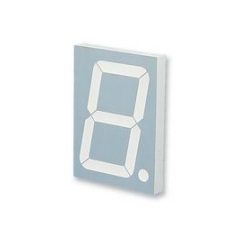How should the parameters of spot capacitors be selected?
How Should the Parameters of Spot Capacitors Be Selected?
I. Introduction
In the world of electronics, capacitors play a crucial role in various applications, from power supply circuits to signal processing. Among the different types of capacitors, spot capacitors are particularly important due to their specific applications and performance characteristics. This article will delve into the selection of parameters for spot capacitors, emphasizing the importance of choosing the right specifications to ensure optimal performance in electronic circuits.
II. Understanding Spot Capacitors
A. What are Spot Capacitors?
Spot capacitors are specialized capacitors designed for specific applications where precise performance is required. They serve various functions, including energy storage, filtering, and coupling in electronic circuits. Their ability to store and release electrical energy makes them essential components in many devices.
B. Applications in Various Industries
Spot capacitors find applications across a wide range of industries, including consumer electronics, automotive, telecommunications, and industrial automation. For instance, they are used in power supply circuits to smooth out voltage fluctuations, in audio equipment for signal coupling, and in automotive systems for energy storage in regenerative braking.
C. Types of Spot Capacitors
There are several types of spot capacitors, each with unique characteristics suited for different applications:
1. **Electrolytic Capacitors**: Known for their high capacitance values, these capacitors are often used in power supply circuits. However, they have a limited voltage rating and can be polarized.
2. **Ceramic Capacitors**: These capacitors are known for their stability and reliability. They are commonly used in high-frequency applications due to their low equivalent series resistance (ESR).
3. **Film Capacitors**: With excellent stability and low losses, film capacitors are often used in audio and high-frequency applications.
4. **Tantalum Capacitors**: These capacitors offer high capacitance in a small package and are used in applications where space is limited, such as in mobile devices.
III. Key Parameters of Spot Capacitors
When selecting spot capacitors, several key parameters must be considered to ensure they meet the requirements of the application.
A. Capacitance Value
The capacitance value, measured in farads (F), indicates the capacitor's ability to store electrical energy. It is crucial to select a capacitance value that matches the circuit's requirements. A higher capacitance can provide more energy storage but may also affect the circuit's response time.
B. Voltage Rating
The voltage rating is the maximum voltage the capacitor can handle without failing. Selecting a voltage rating that exceeds the maximum voltage in the circuit is essential to prevent breakdown and ensure reliability. Factors influencing voltage selection include the circuit's operating conditions and potential voltage spikes.
C. Equivalent Series Resistance (ESR)
ESR is a measure of the resistance encountered by the current flowing through the capacitor. It significantly impacts the capacitor's performance, especially in high-frequency applications. Low ESR is desirable for applications requiring high efficiency, while high ESR can lead to increased heat generation and reduced performance.
D. Temperature Coefficient
The temperature coefficient indicates how the capacitance value changes with temperature. Selecting a capacitor with an appropriate temperature coefficient is essential for applications exposed to varying environmental conditions. For instance, a capacitor with a low temperature coefficient is preferable in high-temperature environments.
E. Ripple Current Rating
Ripple current rating refers to the maximum AC current the capacitor can handle without overheating. It is crucial to calculate the ripple current requirements based on the application's load conditions to prevent premature failure.
IV. Factors Influencing Parameter Selection
Several factors influence the selection of parameters for spot capacitors, including application requirements, environmental conditions, and longevity.
A. Application Requirements
Different applications have varying requirements for capacitors. For example, power supply circuits may require capacitors with high capacitance and voltage ratings, while signal processing applications may prioritize low ESR and stability.
B. Environmental Conditions
Environmental factors such as temperature, humidity, and mechanical stress can significantly impact capacitor performance. It is essential to consider these conditions when selecting parameters to ensure reliability and longevity.
C. Longevity and Reliability
The expected lifespan of the capacitor and potential failure modes should be considered during selection. Capacitors with higher quality materials and construction tend to have longer lifespans and better reliability.
V. Guidelines for Selecting Spot Capacitor Parameters
To ensure optimal performance, follow these guidelines when selecting spot capacitor parameters:
A. Assessing Circuit Requirements
Begin by analyzing the load conditions and understanding the circuit topology. This assessment will help determine the necessary capacitance, voltage rating, and other parameters.
B. Evaluating Manufacturer Specifications
Always refer to the manufacturer's data sheets for specifications and recommendations. Comparing different brands and models can help identify the best option for your application.
C. Prototyping and Testing
Real-world testing is crucial for validating the selected parameters. Prototyping allows for iterative design processes, enabling adjustments based on performance observations.
VI. Common Mistakes in Parameter Selection
When selecting parameters for spot capacitors, several common mistakes can lead to suboptimal performance:
A. Underestimating Voltage Ratings
One of the most critical errors is underestimating the voltage rating. Selecting a capacitor with an insufficient voltage rating can lead to catastrophic failure.
B. Ignoring ESR and Ripple Current
Failing to consider ESR and ripple current can result in inefficient circuit performance and overheating, leading to premature failure.
C. Failing to Consider Temperature Effects
Neglecting the impact of temperature on capacitance can lead to unexpected behavior in circuits operating in varying environmental conditions.
D. Overlooking Manufacturer Recommendations
Manufacturers provide valuable insights and recommendations based on extensive testing. Ignoring these can lead to poor performance and reliability.
VII. Conclusion
In conclusion, selecting the appropriate parameters for spot capacitors is a critical aspect of electronic design. By understanding the key parameters, considering application requirements, and avoiding common mistakes, engineers can ensure optimal performance and reliability in their circuits. As technology continues to evolve, further research and learning about capacitor technology will be essential for staying ahead in the field.
VIII. References
- Suggested Reading Materials
- Relevant Industry Standards and Guidelines
By following the guidelines outlined in this article, engineers and designers can make informed decisions when selecting spot capacitors, ultimately leading to more reliable and efficient electronic systems.








